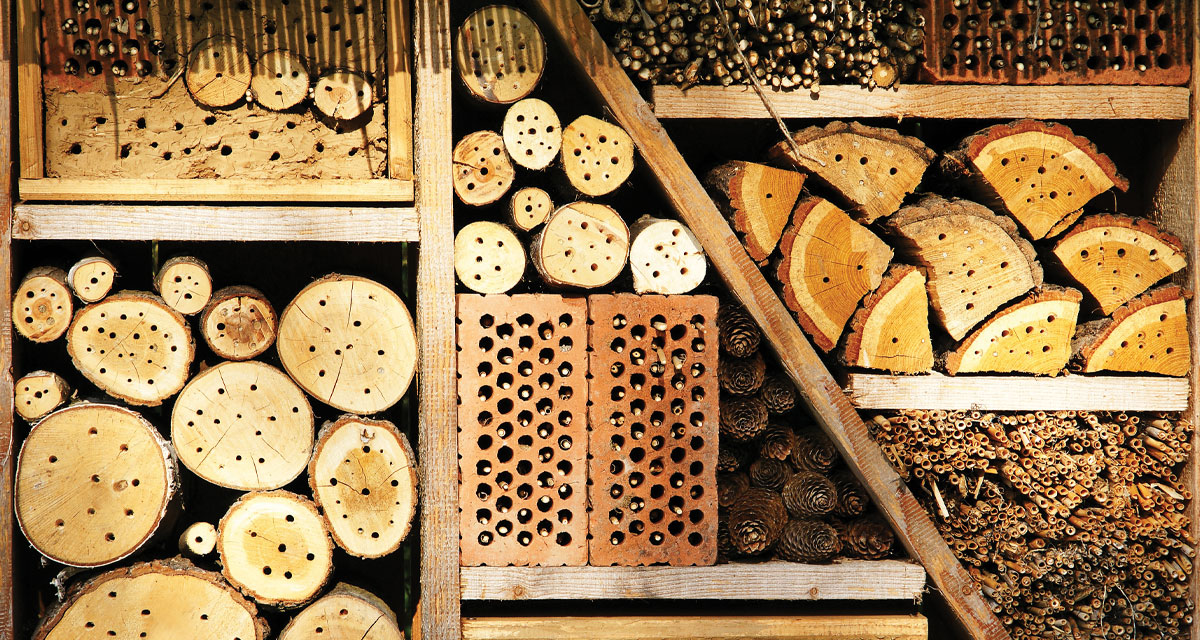Just as banners indicate a need to “save the bees” alongside support welcoming other pollinators, the insect hotel is another proactive method for families to lure beneficial insects to a habitat. With substantial changes to our woodland ecosystems, here is an opportunity to support our favorite flyers. Come lacewings and bees, butterflies, and beetles! Just land right here at the insect hotel!
A Refuge
Driving along Stratford Road in search of a restaurant, for example, passengers know the coordinates to their favorite meal in town. Insects, too, have a scout who will return with news of the most prominent food sources. And, if they presumably had a good time, returning is likely, especially if lodging is available. In your hotel, beneficial bugs can unpack, sleep through rainstorms and destroy harmful insects on sun-filled days, all the while boosting the plant life.
Inspect a Ready-Made Hotel First
Before you invest in buying an attractive insect hotel online or at a store, ask the following questions.
- Can I commit to cleaning the hotel each year?
- Are holes in the structure at least six inches deep?
- Are nesting materials removable for cleaning or replacing? Glued nesting materials can be a death trap for good insects. As a preventative, seek structures with removable parts. Be aware of tubes, for instance, uncapped in the back. Parasites will infest and kill the eggs and insects if tubes are not sealed on one end with mud.
- What are the materials? Choose natural wood over plastic, which has the propensity to form mold.
- Does it have a sloping awning to protect nest entrances from water?
- Are instructions included?
- Is there a hook or means to fasten the house securely to a tree or pole?
The goal of the insect hotel is to provide a favorable location for your welcome guests. Inspecting it for the right materials and proper construction ensures that you are promoting increased populations, rather than doubling harmful pests.
What Do the Holes and Slits Attract?
Since most hotels are elaborate and sometimes too large, consider making a smaller version. Begin with an untreated piece of natural wood to construct the frame. The structure should have a straight back to prevent movement, a sloping roof, and full sunlight.
Red Mason Bees: The leafcutter and bell bee can occupy small tubes, roughly 10 millimeters and 2 millimeters in diameter. Use bamboo or other type of thin hollow branches.
Solitary Bees: Within a frame roughly 20 centimeters square, use wooden blocks of 1-millimeter holes to appeal to winged creatures. Consider adding to your hotels by creating structures of supplementary items, such as sunflower stems, elderberry shoots, or bamboo sticks. Capped holes at the opening will help some insects remain through the hibernation season.
Ladybugs: They prefer to settle in dry plant material, so use twigs tightly placed between the roof and floor of the squared section to prevent crushing.
Butterflies: Building a butterfly house requires extra time, materials, and tools, such as a jigsaw. By means of a removable section in the hotel, preferably in the back, homeowners can access the house and clean the interior by replacing sticks or stalks.
Cleaning and Storage
As temperatures change, move your insect hotel to a dry location, such as a breezeway or garden shed. Many of your tenants may hibernate through the winter and require additional safety. Once a full year of care ends, you’ll know how to increase the population of beneficial flyers in subsequent years.
Creating a refuge for insects is a rewarding experience for watchful adults and children. By spreading the word about constructing homemade insect hotels through word-of-mouth or social media, you’ll likely influence family and friends to join the effort and expand the biodiversity of our ecosystem.























